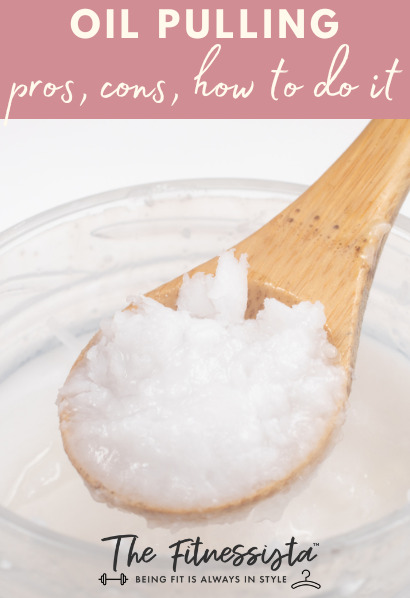How deep can you squat? If the answer is “not so low,” you’re probably looking for ways to increase your squat depth. But before you try to maximize your max depth PR, let’s look at what factors affect how deep you can (and should) safely squat. Your anatomy plays a key role in how deep you squat, making it a limiting factor. But there’s another factor under your control – your level of mobility.
While squatting butt-to-grass might seem like the goal, your hip, ankle, and thoracic mobility ultimately determine your ideal squat depth. Forcing your body past its natural limits increases the risk of injury. But with targeted stretching and strengthening, you can improve your mobility and range of motion over time and that will improve your squat form and depth.
The exciting part? There’s no universal “right” depth. It depends on your anatomy. Once you identify your ideal depth, you can progress safely – and move toward implementing strong, picture-perfect squats, no matter the depth.
Let’s dive into the factors that influence depth so you can find your personal squat sweet spot.
Your Body Proportions Make a Difference
When it comes to nailing the perfect squat, your unique body proportions are key – it comes down to your torso-to-femur ratio. It’s the torso-to-femur ratio that explains why some people have such an easy time squatting deep.
Is your torso long compared to your femur? Lucky you! A longer torso lets you squat with an upright back versus leaning way forward. This makes it easier to dip low into a deep squat with great form. So, a long torso works in your favor when you’re squatting and gives you an edge for going deeper.
But if you’re blessed with a shorter torso and longer femur, you’ll need to lean more to balance, which can limit how deep you squat. But don’t let that discourage you or keep you from acing the squat. You can squat powerfully at a height that works for your body!
And don’t forget your tibias – longer tibias mean you can squat tall, while shorter tibias work better with a wider stance.
What you don’t want to do is try to force your body into an Instagram-worthy squat. Find the stance and depth that fits your unique torso-to-femur-to-tibia combo. Then you can squat like a boss with happiness for those joints. The key is to find your personal squat groove. Work it!
Get Loose to Squat Deep – A Mobility Check-In
Your skeleton sets the stage – but mobility makes all the difference for squat depth.
Limited ankle mobility? This stops you from sitting back enough to really drop it low. Ways to work on this problem:
Calf stretches – Gastrocnemius and soleus stretches can help improve dorsiflexion range of motion. Hold stretches for 30-60 seconds, 2-3 times per day.
Banded ankle distractions – Loop a resistance band around the foot and gently pull the toes towards you to mobilize the ankle joint.
Ankle mobility drills – Do ankle circles, write the alphabet with your feet, and move through the full ankle range of motion daily.
Tight hamstrings or hips? It’ll make it more challenging to squat deep. Ways to work on this problem include:
Hamstring stretches – Try dynamic stretches like toe touches, single-leg deadlifts, and leg swings to lengthen tight hamstrings.
Yoga poses – Add forward folds, pyramid pose, and seated forward bends to your routine.
Foam rolling – Use a foam roller to apply pressure along the hamstrings and relieve tension.
Even your thoracic spine mobility matters – stiffness there leads to strain. Core stability and hip control are clutch too for mastering depth with good form. Ways to correct this include:
Thoracic spine rotations – Rotate your upper back carefully in both directions to increase mobility.
Foam rolling – Roll the upper back over a foam roller or peanut to loosen tissues.
Yoga – Poses like cat-cow, thread the needle, and child’s pose improve thoracic mobility.
Doorway chest stretches – Open up tight chest muscles that can restrict thoracic mobility.
Core Stability Issues Can Make It Harder to Squat Deep
Your core muscles play a critical role in stabilizing the spine and pelvis during the squat, allowing you to safely control and achieve depth in the movement. Weakness or poor activation in your core can undermine your squatting technique and limit your depth. Here are the reasons why:
Reduced Spinal Stability
Squatting requires maintaining a neutral, braced spine position as you descend into the squat. When you have a weak core, you’re more likely to round your back and allow your upper back to collapse when you squat. This makes it harder to squat deep without compensation. Lack of core stiffness reduces spinal stability, placing more strain on the spine as you squat deeper.
Anterior Pelvic Tilt
Weak or inactive glutes and abdominal muscles can lead to excessive anterior pelvic tilt as you squat. This tips your pelvis forward, putting your lower back in a vulnerable flexed position and making it hard to sit back comfortably into the squat without rounding your back.
Lateral Pelvic Tilt
Imbalances in core strength can also cause the pelvis to tilt to one side. It’s not hard to see how this lopsided stance throws off your squat technique and makes it harder to achieve depth. You end up compensating by shifting your body weight to find stability.
Reduced Motor Control
Your core coordinates proper muscle sequencing and timing throughout the squat. With poor core control, your movement may lack fluidity, or you may have trouble maintaining proper alignment as you squat deeper. This increases injury risk.
The takeaway is that core strength provides an essential foundation for safe, deep squatting. Assessing and addressing any core stability deficits can allow you to reach your maximum squat depth with proper technique. A strong, engaged core equals a strong, deep squat!
So, strengthen your core and glutes with some of these approaches:
Planks – Hold front, side, and reverse planks to build a stable core.
Glute bridges – Target and strengthen glutes, hamstrings, and core muscles.
Deadbugs – Activate deep core stabilizers in this fundamental exercise.
With consistent stretching, foam rolling, and targeted strengthening, you can improve mobility limitations and safely reach new squat depth PRs.
The Squat: A Journey to Your Maximum Depth
When it comes to squatting low with perfect form, there’s no one-size-fits-all approach. Your unique anatomy and mobility determine how deep you can sink it. While super deep squats look impressive, forcing your body past its limits risks injury.
The exciting part? You can improve mobility restrictions over time with targeted stretching and strengthening. Discover your body’s structure and work patiently to enhance its capabilities. There’s no right or wrong – only your own maximum squat potential waiting to be uncovered.
Respect your body’s needs, embrace its individual gifts, and progress safely. With mindful effort, you’ll find your personal squat sweet spot. Soon you’ll be showing off strong, picture-perfect squats at your ideal depth. Your max squat PR awaits – let’s get to work!
References:
Bryanton, Megan A, Michael D Kennedy, Jason P Carey, and Loren Z.F. Chiu. “Effect of Squat Depth and Barbell Load on Relative Muscular Effort in Squatting.” Journal of Strength and Conditioning Research 26, no. 10 (October 1, 2012): 2820–28. https://doi.org/10.1519/jsc.0b013e31826791a7.
Endo, Yasuhiro, Masashi Miura, and Masaaki Sakamoto. “The Relationship between the Deep Squat Movement and the Hip, Knee and Ankle Range of Motion and Muscle Strength.” Journal of Physical Therapy Science 32, no. 6 (January 1, 2020): 391–94. https://doi.org/10.1589/jpts.32.391.
Swinton, Paul, Ray Lloyd, Justin W L Keogh, Ioannis Agouris, and Arthur D Stewart. “A Biomechanical Comparison of the Traditional Squat, Powerlifting Squat, and Box Squat.” Journal of Strength and Conditioning Research 26, no. 7 (July 1, 2012): 1805–16. https://doi.org/10.1519/jsc.0b013e3182577067.
Related Articles By Cathe:
How Extreme Diets and Yo-Yo Dieting Ages Your Skin
If You Have Back Pain, Are Back or Front Squats a Safer Choice?
The Surprising Fitness Benefits of Half Squats
Are Partial Reps “Cheating” or Can They Help You Gain Strength?
What Does Research Show about Partial Reps vs. Full Reps for Strength Training?
Are Squats a Good Exercise for Your Hamstrings?
5 Ways to Get More Benefits from Bodyweight Squats









